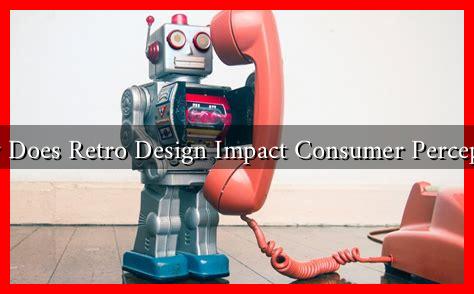-
Table of Contents
How Does Retro Design Impact Consumer Perception?
In an era dominated by sleek, modern aesthetics, retro design has emerged as a powerful tool for brands seeking to connect with consumers on a deeper level. This article explores how retro design influences consumer perception, examining its psychological effects, cultural significance, and practical applications in marketing.
The Psychology Behind Retro Design
Retro design taps into nostalgia, a powerful emotion that can significantly influence consumer behavior. According to a study published in the journal *Psychology & Marketing*, nostalgia can enhance consumers’ emotional connection to a brand, leading to increased loyalty and purchase intent. Here are some psychological factors at play:
- Nostalgia: Retro design evokes memories of the past, creating a sense of comfort and familiarity.
- Trust: Older design styles can convey reliability and authenticity, making consumers feel more secure in their purchasing decisions.
- Identity: Consumers often use products to express their identity; retro designs can resonate with specific cultural or generational identities.
Cultural Significance of Retro Design
Retro design is not just about aesthetics; it reflects cultural trends and societal values. The resurgence of retro styles often coincides with a collective yearning for simpler times, especially during periods of uncertainty. For instance, the popularity of 80s and 90s aesthetics in fashion and technology can be seen as a response to the fast-paced, digital world we live in today.
Brands that successfully incorporate retro elements often do so by aligning their products with cultural movements. For example, Coca-Cola’s use of vintage packaging during its “Share a Coke” campaign not only evoked nostalgia but also reinforced its long-standing heritage in the beverage industry.
Case Studies: Brands Leveraging Retro Design
Several brands have effectively utilized retro design to enhance consumer perception. Here are a few notable examples:
- Apple: The revival of the iMac in vibrant colors reminiscent of the late 90s not only appealed to nostalgia but also attracted a younger audience curious about the brand’s history.
- Levi’s: The brand’s use of vintage styles and advertising campaigns that harken back to its roots have solidified its status as a timeless classic in the denim market.
- Volkswagen: The reintroduction of the VW Beetle with a retro design appealed to both older consumers who remembered the original and younger consumers drawn to its quirky charm.
Statistics Supporting Retro Design’s Effectiveness
Research indicates that retro design can significantly impact consumer behavior. A survey conducted by *Nielsen* found that:
- 60% of consumers are more likely to purchase a product that evokes nostalgia.
- Brands that incorporate retro elements see a 20% increase in brand loyalty among consumers aged 25-40.
- Products with retro packaging can experience a 15% increase in sales compared to their modern counterparts.
Practical Applications in Marketing
To effectively leverage retro design, brands should consider the following strategies:
- Authenticity: Ensure that retro elements are genuine and resonate with the brand’s history.
- Target Audience: Identify the demographic that will respond positively to retro design, tailoring campaigns to their preferences.
- Multimedia Integration: Use social media and digital marketing to showcase retro designs, engaging consumers through interactive content.
Conclusion
Retro design is more than just a trend; it is a powerful tool that can significantly impact consumer perception. By tapping into nostalgia, brands can create emotional connections, enhance trust, and resonate with cultural identities. As demonstrated by successful case studies and supported by compelling statistics, retro design can lead to increased brand loyalty and sales. In a world where consumers are constantly bombarded with newness, the charm of the past offers a refreshing alternative that can help brands stand out in a crowded marketplace.
For further reading on the impact of design on consumer behavior, check out this insightful article on Forbes.

